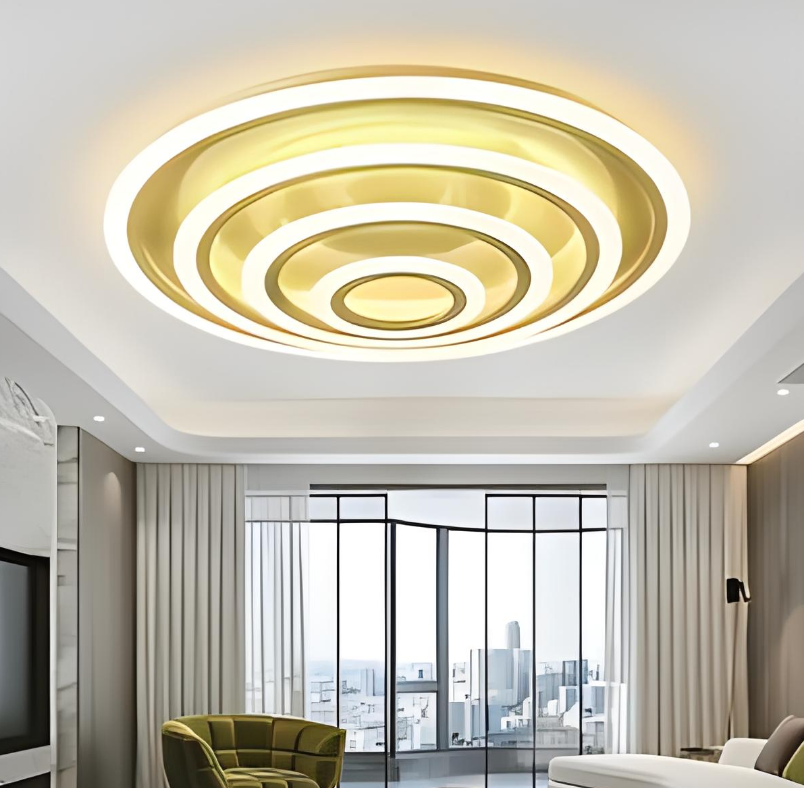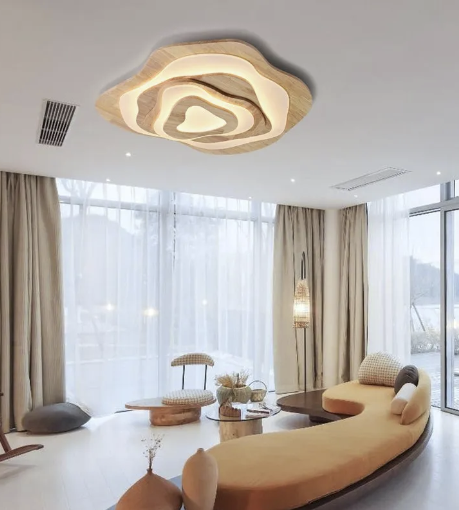The allure of retro art wooden ceiling lamps lies in their unique ability to blend nostalgia with modern aesthetics. These fixtures often evoke a sense of warmth and character, reminiscent of mid-century design while seamlessly fitting into contemporary spaces. Crafted from various types of wood, these lamps can feature intricate carvings, geometric shapes, or minimalist designs that reflect the artistic movements of the past.
The combination of wood and light creates an inviting atmosphere, making them a popular choice for homeowners and designers alike. In recent years, there has been a resurgence in the appreciation for vintage styles, and wooden ceiling lamps have become a focal point in many interior design schemes. Their versatility allows them to complement a range of decor styles, from rustic and farmhouse to sleek and modern.
As more people seek to create personalized spaces that tell a story, retro art wooden ceiling lamps serve as both functional lighting solutions and artistic statements that enhance the overall ambiance of a room.
Benefits of Using a Wooden Ceiling Lamp
One of the primary benefits of using a wooden ceiling lamp is its ability to add warmth to a space. Wood has an inherent quality that softens the harshness often associated with artificial lighting. When illuminated, wooden lamps emit a gentle glow that can transform a room into a cozy retreat.
This is particularly beneficial in areas where people gather, such as living rooms or dining areas, where creating an inviting atmosphere is essential. Additionally, wooden ceiling lamps are often more sustainable than their metal or plastic counterparts. Many manufacturers prioritize eco-friendly practices by sourcing wood from responsibly managed forests or utilizing reclaimed materials.
This not only reduces the environmental impact but also adds a unique story to each piece. The natural variations in wood grain and color ensure that no two lamps are identical, allowing homeowners to invest in a one-of-a-kind fixture that reflects their personal style.
How to Choose the Right Wooden Ceiling Lamp for Your Space
Selecting the perfect wooden ceiling lamp involves considering several factors, including the size of the room, the height of the ceiling, and the overall design aesthetic. For larger spaces with high ceilings, a statement piece with bold design elements can serve as a focal point. Conversely, in smaller rooms, opting for a more understated lamp can prevent the space from feeling overcrowded.
It’s essential to strike a balance between functionality and style; the lamp should provide adequate lighting while enhancing the room’s decor. Another critical aspect to consider is the type of wood used in the lamp’s construction. Different woods offer varying colors and textures, which can significantly impact the overall look of the fixture.
For instance, lighter woods like maple or birch can create a fresh and airy feel, while darker woods such as walnut or mahogany add richness and depth. Additionally, consider the finish of the lamp; a natural finish may highlight the wood’s grain, while painted or stained options can introduce color and contrast into your design scheme.
Tips for Incorporating Retro Art into Your Interior Design
Incorporating retro art into your interior design can be an exciting endeavor that allows for creativity and personal expression. One effective approach is to curate a collection of vintage-inspired pieces that resonate with your style. This could include artwork, textiles, or decorative objects that reflect the colors and patterns popular in past decades.
By thoughtfully selecting items that complement each other, you can create a cohesive look that pays homage to retro aesthetics while remaining fresh and modern. Another way to integrate retro art is through color schemes. Many retro designs feature bold colors and playful patterns that can invigorate a space.
Consider using these elements as accents in your decor—such as throw pillows, rugs, or wall art—to create visual interest without overwhelming the room. Pairing these vibrant accents with neutral furniture or fixtures allows for balance and harmony within the space. Additionally, incorporating retro-inspired lighting fixtures, like wooden ceiling lamps, can tie together your design theme while providing functional illumination.
DIY Ideas for Customizing Your Wooden Ceiling Lamp
For those who enjoy hands-on projects, customizing a wooden ceiling lamp can be a rewarding experience that adds a personal touch to your home decor. One simple DIY idea is to paint or stain the lamp in a color that complements your existing decor. Using chalk paint can create a matte finish that gives the lamp a vintage feel, while metallic spray paint can add a modern twist.
Before starting any painting project, ensure you properly prepare the surface by sanding it down and applying a primer if necessary. Another creative approach is to embellish the lamp with decorative elements such as stencils or decoupage techniques. You could use vintage wallpaper scraps or fabric swatches to cover sections of the lamp, creating a unique pattern that reflects your style.
Additionally, consider adding decorative hardware or lightbulbs with unique shapes to enhance the overall aesthetic. These small modifications can transform an ordinary lamp into a stunning centerpiece that showcases your creativity.
Maintenance and Care for Wooden Ceiling Lamps
Cleaning Your Wooden Ceiling Lamp
Regular dusting is crucial to maintain the appearance of your wooden ceiling lamp. Use a soft cloth or microfiber duster to remove dust without scratching the wood surface. For deeper cleaning, use a damp cloth followed by immediate drying to prevent moisture damage.
Avoiding Damage and Safety Hazards
Avoid using harsh chemicals or abrasive cleaners, as these can strip away finishes or damage the wood. It’s also important to periodically check the electrical components of your wooden ceiling lamp. Ensure that all connections are secure and inspect the wiring for any signs of wear or damage.
Ensuring Long-Term Functionality
If you notice any issues, it’s best to consult with a qualified electrician to address potential safety hazards. By taking these simple maintenance steps, you can ensure that your wooden ceiling lamp remains a beautiful and functional part of your home for years to come.
Creative Ways to Use Wooden Ceiling Lamps in Different Rooms
Wooden ceiling lamps are incredibly versatile and can be used creatively in various rooms throughout your home. In living rooms, they can serve as statement pieces that draw attention while providing ambient lighting for gatherings. Consider placing them above seating areas or dining tables to create an inviting atmosphere where family and friends can enjoy each other’s company.
In bedrooms, wooden ceiling lamps can contribute to a serene environment conducive to relaxation and rest. Opting for softer lighting options or dimmable fixtures allows you to adjust the brightness according to your mood or time of day. Additionally, using smaller wooden lamps in hallways or entryways can create a warm welcome for guests while enhancing the overall flow of your home’s design.
Where to Find Retro Art Wooden Ceiling Lamps
Finding retro art wooden ceiling lamps can be an enjoyable treasure hunt for design enthusiasts. Many local boutiques specialize in vintage or handmade items, offering unique pieces that may not be available elsewhere. Antique shops are also excellent places to discover one-of-a-kind lamps with character and history; often, these shops carry items from various eras that can add depth to your decor.
Online marketplaces have also become popular venues for sourcing retro art wooden ceiling lamps. Websites like Etsy feature artisans who create custom pieces that reflect individual styles and preferences. Additionally, larger retailers may offer curated collections of retro-inspired lighting options that cater to various tastes and budgets.
By exploring both local and online resources, you can find the perfect wooden ceiling lamp that resonates with your aesthetic vision while enhancing your living space.




